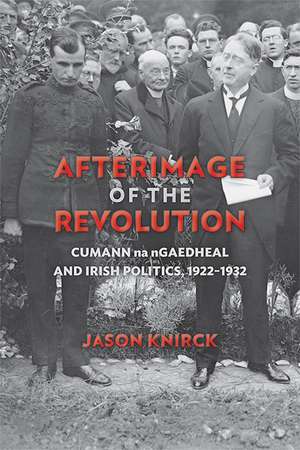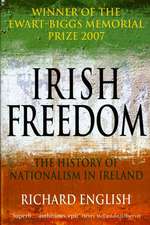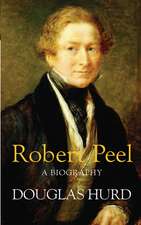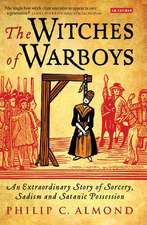Afterimage of the Revolution: Cumann na nGaedheal and Irish Politics, 1922–1932: History of Ireland & the Irish Diaspora
Autor Jason Knircken Limba Engleză Paperback – 27 feb 2014
In response to the view that Cumann na nGaedheal was actually a reactionary counterrevolutionary party, Afterimage of the Revolution contends that, in building the new Irish state, the government framed and promoted its policies in terms of ideas inherited from the revolution. In particular, Cumann na nGaedheal emphasized Irish sovereignty, the "Irishness" of the new state, and a strong sense of anticolonialism, all key components of the Sinn Féin party platform during the revolution. Jason Knirck argues that the 1920s must be understood as part of a continuing Irish revolution that led to an eventual independent republic. Drawing on state documents, newspapers, and private papers—including the recently released papers of Kevin O'Higgins—he offers a fresh view of Irish politics in the 1920s and integrates this period more closely with the Irish Revolution.
Preț: 258.96 lei
Nou
Puncte Express: 388
Preț estimativ în valută:
49.55€ • 52.11$ • 40.94£
49.55€ • 52.11$ • 40.94£
Carte tipărită la comandă
Livrare economică 17 aprilie-01 mai
Preluare comenzi: 021 569.72.76
Specificații
ISBN-13: 9780299295844
ISBN-10: 0299295842
Pagini: 318
Dimensiuni: 152 x 229 x 20 mm
Greutate: 0.48 kg
Ediția:1
Editura: University of Wisconsin Press
Colecția University of Wisconsin Press
Seria History of Ireland & the Irish Diaspora
ISBN-10: 0299295842
Pagini: 318
Dimensiuni: 152 x 229 x 20 mm
Greutate: 0.48 kg
Ediția:1
Editura: University of Wisconsin Press
Colecția University of Wisconsin Press
Seria History of Ireland & the Irish Diaspora
Recenzii
"A major contribution to understanding the government of Ireland from 1922 to 1932, demonstrating that it remained committed to the revolutionary ideals of the 1916 Rising and the War of Independence."—John McCarthy, author of Twenty-First Century Ireland: A View from America
Notă biografică
Jason Knirck is an associate professor of history at Central Washington University and the author of Women of the Dáil: Gender, Republicanism and the Anglo-Irish Treaty and Imagining Ireland’s Independence.
Cuprins
Acknowledgments
1 Cumann na nGaedheal, Historians, and the Irish Revolution
2 The Treaty and the Revolutionary Inheritance
3 Security, Order, and Sovereignty
4 The Promotion of Irishness
5 The Treaty and the Empire
6 A Dominion in Name
7 Reclaiming the Revolution
Notes
Bibliography
IndexDescriere
Ascending to power after the Anglo-Irish Treaty and a violent revolution against the United Kingdom, the political party Cumann na nGaedheal governed during the first ten years of the Irish Free State (1922–32). Taking over from the fallen Michael Collins and Arthur Griffith, Cumann na nGaedheal leaders such as W. T. Cosgrave and Kevin O'Higgins won a bloody civil war, created the institutions of the new Free State, and attempted to project abroad the independence of a new Ireland.
In response to the view that Cumann na nGaedheal was actually a reactionary counterrevolutionary party, Afterimage of the Revolution contends that, in building the new Irish state, the government framed and promoted its policies in terms of ideas inherited from the revolution. In particular, Cumann na nGaedheal emphasized Irish sovereignty, the "Irishness" of the new state, and a strong sense of anticolonialism, all key components of the Sinn Féin party platform during the revolution. Jason Knirck argues that the 1920s must be understood as part of a continuing Irish revolution that led to an eventual independent republic. Drawing on state documents, newspapers, and private papers—including the recently released papers of Kevin O'Higgins—he offers a fresh view of Irish politics in the 1920s and integrates this period more closely with the Irish Revolution.






























